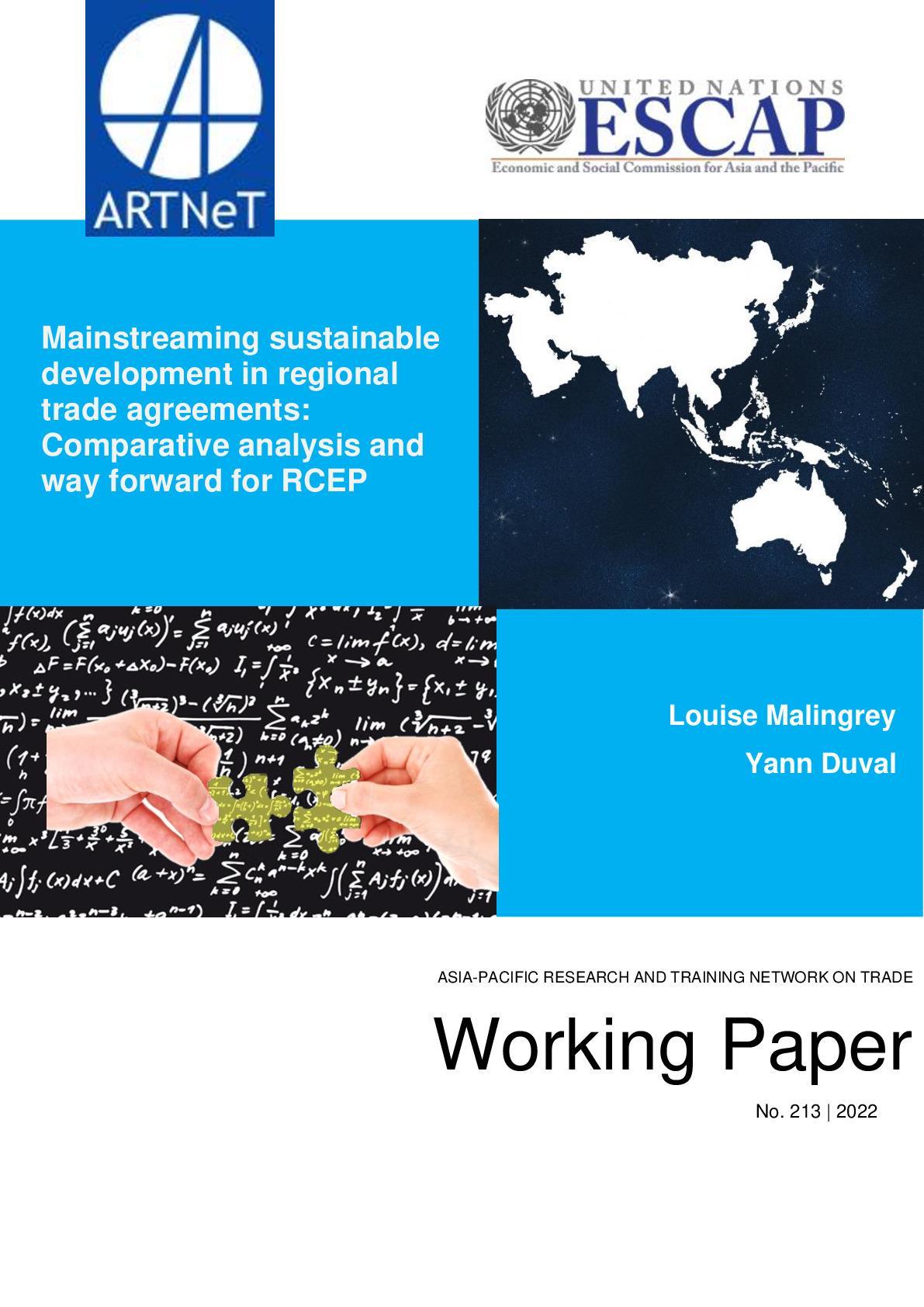Mainstreaming sustainable development in regional trade agreements: Comparative analysis and way forward for RCEP

In this paper, we review the sustainable development content of regional trade agreements (RTAs) globally using a new ESCAP RTA Text Analysis tool, followed by a comparative analysis of sustainable development related provisions in the Regional Comprehensive Economic Partnership (RCEP) and two other recent “mega” regional trade agreements (RTAs), namely the Comprehensive and Progressive Agreement for Trans-Pacific Partnership (CPTPP) and the European Union – Japan Economic Partnership Agreement (EU – Japan EPA). The EU-Japan EPA and the CPTPP follow different approaches as they have been drafted under the influence of the EU and the United States, respectively, while the RCEP was driven from within Asia-Pacific.
The analysis covers seven sustainable development-related topics: (1) sustainable development as a concept, (2) labour rights and standards, (3) environment (4) human rights, (5) small and medium-sized enterprises, (6) gender, and (7) health. The global review of RTA texts confirms the increasing reference to sustainable development and related areas in RTAs signed over the past decade. The comparative analysis of the three mega-RTAs in turn confirms the large gaps of RCEP in terms of sustainable development coverage. However, it also points to specific and practical ways through which RCEP could address these gaps in time to support the achievement of the 2030 Agenda for Sustainable Development – also drawing upon the interest expressed by many RCEP countries in joining CPTPP.
A two-step path forward and different options for integrating sustainable development in RCEP are proposed, based on existing provisions and the differing approaches of the CPTPP and the EU-Japan EPA. We hope this paper will provide useful guidance to RCEP members for enhancing the sustainable development content of the agreement in time for its upcoming five-year review.
